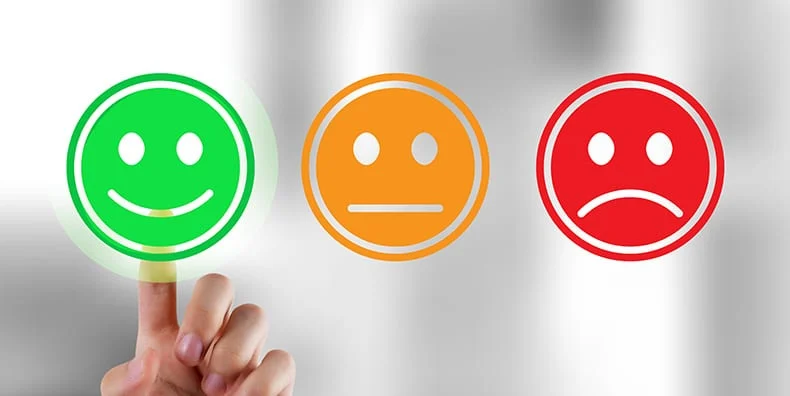Bipolar disorder is a serious mental illness that can cause episodes of mania and depression. It’s also known as manic-depressive illness. You may be suffering from bipolar disorder or might know someone who does. This article will give you some helpful advice on how to live happily with bipolar disorder and what treatments are available for it.
How do I know if someone has bipolar disorder?
Identifying bipolar disorder in someone you know can be difficult. They may not always talk about their symptoms and may try to hide them from you. If you think your loved one might have bipolar disorder, look for these changes:
- Mood swings. Your loved one may go through periods of extreme happiness, sadness or irritability that don’t seem to have a reason.
- Sleep patterns changed. Your loved one might sleep more than usual or less than usual or experience changes in the type of sleep they get. For example, falling asleep easily during the day but having trouble sleeping at night. He or she may also wake up earlier than normal and find it hard to fall back asleep again at night because he/she is so wide awake!
- Appetite changes – Eating too much (binging) during an episode or eating very little (withdrawing) during an episode are common signs of bipolar disorder as well as extreme weight loss/gain due to overeating/undereating without being able to stop yourself from doing either one even if this makes your body sicker than ever before.
What is bipolar disorder and what are its symptoms?
Bipolar disorder is a serious mental health condition that causes unusual shifts in mood, energy, activity levels and the ability to carry out day-to-day tasks. It’s estimated that one in every 50 people has bipolar disorder at some point in their life.
There are two main types of bipolar disorder: bipolar I and bipolar II.
Bipolar I symptoms include severe episodes of depression and mania, which can lead to psychosis (seeing or hearing things that aren’t there). During a manic episode, someone might feel very elated or euphoric, have racing thoughts or sleep very little for days on end with little need for food or sleep. They may also be overactive and have impulsive behavior such as spending lots of money on items they don’t need or having affairs when they’re married because they think it will make them happy again after being depressed all the time! Some people might also become paranoid about others stealing from them during this time too!
When you experience depression it can be really hard dealing with these negative thoughts about yourself because others around you don’t understand what’s going on inside your head. Especially if those closest to us don’t know anything about bipolar disorder yet either!
The importance of a healthy diet for dealing with bipolar disorder.
A healthy diet is a vital part of bipolar disorder management. It can help you maintain your weight, feel more energetic and improve your mood.
A balanced diet can be rich in nutrients, vitamins and minerals so it’s important to avoid foods that are high in sugar or salt which may trigger mood swings. It could also cause weight gain which can trigger further symptoms of bipolar disorder such as depression.
Here are some examples of healthy foods:
- Wholemeal bread
- Oats
- Fruit such as apples, oranges or pears
- Vegetables such as broccoli or carrots
Exercise regularly to help control the symptoms of bipolar disorder.
Exercise is good for your mind, body, and spirit. It can help you feel more energized, sleep better, and manage stress more effectively. Exercise also helps control the symptoms of bipolar disorder by regulating the level of chemicals in the brain. When you exercise regularly, you may experience less depression or mania.
The best type of exercise for people with bipolar disorder is aerobic activity (running, swimming) that gets your heart rate up for at least 30 minutes at a time on most days of the week. Even if you don’t like to go outside or get sweaty during a workout session, there are other ways to get moving while still enjoying yourself: try dancing instead! You could also go on long walks with friends; take up yoga classes; enjoy some alone time with light weightlifting, or even try participating in an indoor cycling class at your local gym if you’re feeling especially motivated!
What treatment options are available for bipolar disorder?
There are several treatment options for bipolar disorder. These include:
- Medication. The main goal of medication in bipolar disorder is to reduce the severity and frequency of manic and depressive symptoms, as well as prevent relapse into either extreme mood state.
- Therapy and counseling. Various forms of psychotherapy have been shown to be helpful for those with bipolar disorder, including cognitive behavioral therapy (CBT) or interpersonal therapy (IPT).
- Lifestyle changes. In addition to mental health interventions, lifestyle changes can help manage symptoms of bipolar disorder by reducing stressors and improving overall health while promoting wellness or self-care practices that serve as coping mechanisms during difficult times. Some examples include exercising regularly, eating a balanced diet filled with plenty of fruits and vegetables or getting enough sleep at night so your body has the energy it needs to function optimally during the day (sleeping seven hours per night is recommended).
Conclusion
When you have bipolar disorder it can feel like you’re on a roller coaster ride that never ends. But if you take the time to learn about your condition, and seek treatment and support from others who understand what you are going through then there is hope for a better future. With the right care and support, it is possible for people with bipolar disorder to live happy lives and enjoy relationships with others without being controlled by their illness.




